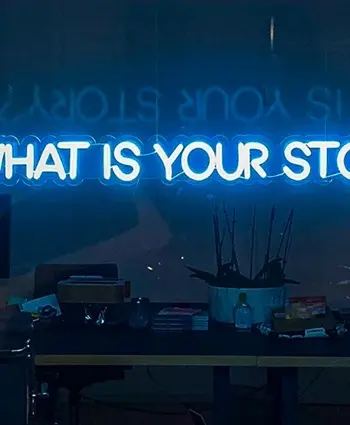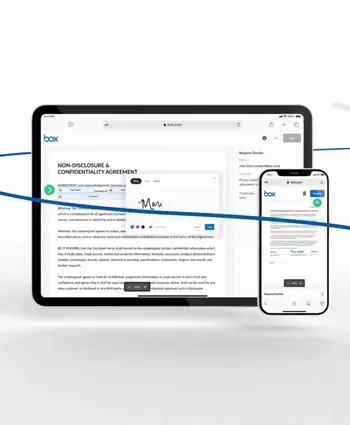
4 Ways Video Will Vastly Improve Your Internal Comms
How much video do you use? Do you wonder if it should be more? Hint: yes, it should be. Here's how video will improve your internal communications.
How much video do you use in your internal communications? Do you wonder if it should be more? It can be hard to allocate time and resources towards something if you're not entirely sure why you should be using it or what the results will be.

Well, don't wonder any more. In a study of 713 communicators (including business owners, managers and content producers), Ragan Communications identified the top ways that video improved internal communication in their respective companies:
- Improved communication with remote employees (76%)
- Increased alignment with company/organizational goals (58%)
- Our employees are more engaged with senior executives (44%)
- Increased attendance/participation (42%)
- Improved message retention (39%)
Let's expand on those points to examine why corporate video content is so effective internally (and why you should be using it). Here are 4 ways video will vastly improve your internal communications.
1. Your Team is Engaged and You Are Humanised
Imagine reading a wordy, dry written message from your CEO in an internal newsletter. Bored yet?
Now imagine watching a passionate video message from that same CEO, which makes you feel energised about your role in the company and the contribution you're making towards company-wide goals. That's the power of video internal communications.
Now, I'm not saying that the written word should never be used in internal comms. It's a vital part of the whole communication mix. But video is much more immediately attention-grabbing to us humans (we're visual creatures after all), and thus is more engaging.
We're emotional creatures too. Video has the unique ability to capture real facial expressions, body language and human expressions in a way that is impossible for other forms of internal communications. We all react positively to this type of personal, emotive content that makes us feel more connected to others.
So video fits the bill perfectly in terms of both engaging and emotional communication. And that means, when your CEO delivers a corporate video message to your team, your employees won't imagine them as some distant figure giving orders from on high. No, they'll feel a real human connection. When employees are more engaged with senior executives it creates an atmosphere of openness, transparency, and inclusiveness. This in turn leads to improved morale and loyalty.
Plus, when your employees are engaged and your senior figures are humanised, you'll feel more like a cohesive team. There's a higher likelihood that everybody will be on the same page - both in terms of company goals and company culture.
Add all this together and what does it mean? It means video is an incredible medium for engaging, affective internal communication that is capable of aligning teams and building cohesion.
2. Information is More Readily Retained
The key to getting your employees to understand and remember what you want them to know is engagement. Before you can get your message across, your audience first has to be paying attention. So, because video is more engaging than other forms of internal communications, the messages expressed in video content are much more likely to be retained.
Say you read some text or listen to some audio. Wait 72 hours, and you'll only remember 10% of what you read or heard. But combine both visual and auditory senses - by watching a video, for example - and you'll remember 68%.
When you need to communicate important company changes to your whole team, video content will increase the odds that your employees will absorb and understand the message. Video will also help to reduce confusion. With video you have the opportunity to use images, graphical representations and animation to help reinforce complicated information in an quick, focused and easily digestible way.
And by using video you'll create a resource that can be rewatched by employees at any point in the future. Emails can be deleted and newsletters may get binned, but digital video content can be referred back to whenever necessary.
The improved retention of information expressed through video is one the medium's best and most useful features. Use it to your advantage to produce video content for internal messages that really need to be retained, like changes in business structure or employee health and safety.
3. Messages can be Accessed Anywhere, Anytime
Video is an incredibly flexible format for internal communications. It doesn't have to be watched by big groups in conference rooms. It can be viewed by employees anywhere on Earth and at any time of day - as long as they have a device with an internet connection they're good to go.
We live in a world where it isn't unusual for companies to be spread across several countries and time zones. Even if you're based in a single country, no doubt you have members of your team who work part-time or from home. No matter your business situation, you can benefit from the constant accessibility and cost-saving benefits of video.
In the past, to deliver internal messages to employees at multiple locations, you'd have to use print communications or organise, schedule and pay for everybody to meet up at the same place and the same time. Nowadays video makes things a lot easier.
Ensure all your team receives the same message in the same way, without the hassle of geographical distance, time differences or travelling costs. All you need is some video content.
For example, say you produce a series of induction videos. First of all, you'll increase efficiency because those videos can be reused every time a new employee joins your business. Rather than requiring training from specific members of your company, new employees can watch your videos at their preferred pace (and rewatch them as they need to). That's a far more welcoming, personable introduction than a thick employee handbook dumped on their desk.
Embrace the flexibility of video content to help reduce unnecessary meetings, save time and money, and improve communication with remote employees.
4. Tracking Your Success is Simple
So you've sent out a great piece of internal communications - it could be an email, a newsletter or an internal magazine. You can probably track how many of your team have opened your email. But how do you know how long your employees are taking to read your content, and how deeply they're engaging with it?
That metric is difficult, if not impossible, to measure with traditional text-based internal comms. But with video content (a digital format enclosed in players), it's simple.
No matter where you place your video content for your employees to watch, and no matter where they end up viewing it, you'll always have access to analytics. You'll always be able to track standard metrics like audience engagement, allowing you to measure how much of your videos your employees are watching, and how many times.
So video gives you a great deal of power when it comes to tracking the success of your internal communications. Imagine you've created a training video and you want its average engagement to be 80%. The engagement metric will tell you average engagement across all views of the video. If your average engagement is 85%, it means you've exceeded your target because, on average, each viewer watched 85% of the entire video. In addition, with video you can track the views of individual employees to make sure everybody who needs to complete the training has done so.
With video content you can effortlessly track employee participation in important message communication. No more wondering if your message has really been taken in - with video you can know for sure.
No, video isn't the single perfect medium for all internal messages. But it is an important tool that should be a major part of your internal communications, and now you know why. Will you be taking advantage of video content to boost engagement with and retention of your internal comms?
-Oct-17-2022-09-50-33-46-AM.png?width=156&name=Video%20Fundamental%20Guide%20Thumbnail%20(1)-Oct-17-2022-09-50-33-46-AM.png) 5 Fundamentals of Video Content Planning
5 Fundamentals of Video Content Planning
Learn the key steps to planning engaging & effective video content.
Packed full of our expert advice on how to create a video strategy, set SMART objectives, and generate the best possible video ROI.
Written by Lydia Cockerham Copywriter for Venture Videos — a full-service video production agency that specialises in producing creative videos & campaigns that get real results.

![How to Write a Video Brief in 7 Easy Steps [Free Video Briefing Template]](https://www.venturevideos.com/hubfs/Download%20images/video%20production%20brief%20template%20optimised.webp)



